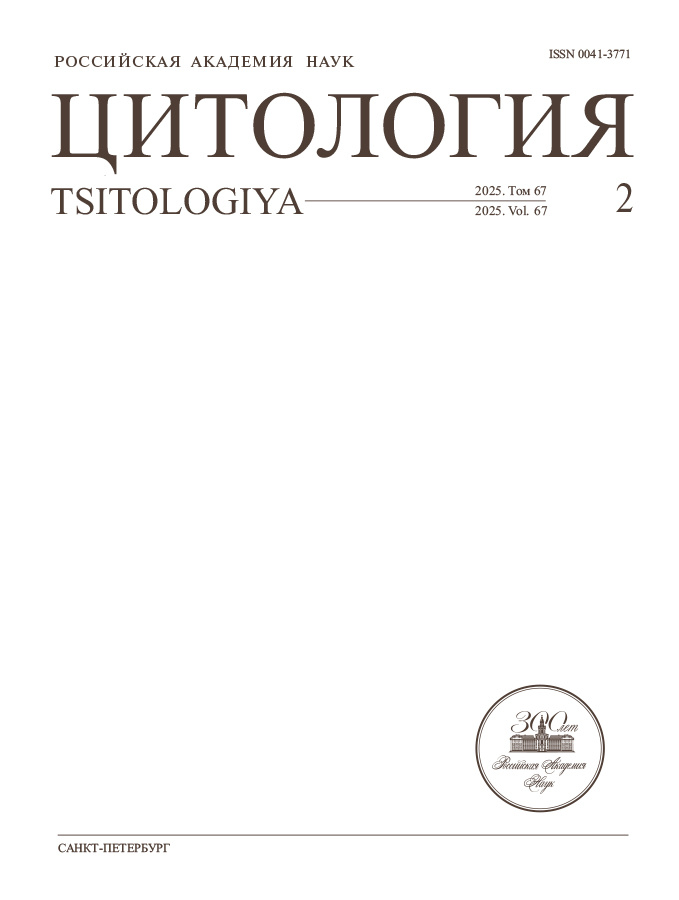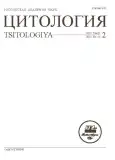Коактиватор транскрипции BOB1 (OBF1, OCA-B) в аутоиммунных заболеваниях
- Авторы: Томилин А.Н.1, Еременко Н.Г.2
-
Учреждения:
- Институт цитологии РАН
- Университет Нанта
- Выпуск: Том 65, № 2 (2023)
- Страницы: 113-118
- Раздел: Статьи
- URL: https://journals.rcsi.science/0041-3771/article/view/140089
- DOI: https://doi.org/10.31857/S0041377123020116
- EDN: https://elibrary.ru/NEQCUA
- ID: 140089
Цитировать
Полный текст
Аннотация
Аутоиммунные заболевания, несмотря на значительные усилия биомедицины на протяжении уже нескольких десятилетий, продолжают оставаться по большей части неизлечимыми и, более того, плохо понятыми с точки зрения молекулярных механизмов их возникновения и развития. Общепризнано, что в основе этих заболеваний лежит сбой в работе адаптивной иммунной системы, главным атрибутом которого являются аутореактивные B- и Т-лимфоциты. Ряд экспериментальных данных, накопленных за последние несколько лет, свидетельствуют о ключевой роли транскрипционного коактиватора BOB1 в появлении аутореактивных лифоцитов. Постулировано, что BOB1 влияет на транскрипцию и локальный эпигенетический статус хроматина опосредованно, а именно через селективное взаимодействие с ДНК-связывающими POU-доменными транскрипционными факторами – экспрессирующимся во всех клетках OCT1, и специфическим для В-клеток OCT2, стабилизируя связывание этих OCT-факторов с ДНК. В обзоре приведены последние сведения о проаутоиммунной активности BOB1, обозначены перспективы использования этого белка в качестве мишени при разработке фармацевтических препаратов, нацеленных на лечения ряда аутоиммунных заболеваний.
Ключевые слова
Об авторах
А. Н. Томилин
Институт цитологии РАН
Автор, ответственный за переписку.
Email: a.tomilin@incras.ru
Россия, 194064, Санкт-Петербург
Н. Г. Еременко
Университет Нанта
Email: a.tomilin@incras.ru
Франция, 44035, Нант
Список литературы
- Betzler A.C., Fiedler K., Hoffmann T.K., Fehling H.J., Wirth T., Brunner C. 2022. BOB.1/OBF.1 is required during B-cell ontogeny for B-cell differentiation and germinal center function. Eur. J Immunol. V. 52. P. 404.
- Betzler A.C., Fiedler K., Kokai E., Wirth T., Hoffmann T.K., Brunner C. 2021. Impaired Peyer’s patch development in BOB.1/OBF.1-deficient mice. Eur. J. Immunol. V. 51. P. 1860.
- Brunner C., Sindrilaru A., Girkontaite I., Fischer K.D., Sunderkotter C., Wirth T. 2007. BOB.1/OBF.1 controls the balance of TH1 and TH2 immune responses. EMBO J. V. 26. P. 3191.
- Brunner C., Wirth T. 2006. Btk expression is controlled by Oct and BOB.1/OBF.1. Nucleic Acids Res. V. 34. P. 1807.
- Christophersen A., Lund E.G., Snir O., Sola E., Kanduri C., Dahal-Koirala S., Zuhlke S., Molberg O., Utz P.J., Rohani–Pichavant M., Simard J.F., Dekker C.L., Lundin K.E.A., Sollid L.M., Davis M.M. 2019. Distinct phenotype of CD4(+) T cells driving celiac disease identified in multiple autoimmune conditions. Nat. Med. V. 25. P. 734.
- da Silva F.A.R., Pascoal L.B., Dotti I., Setsuko Ayrizono M.L., Aguilar D., Rodrigues B.L., Arroyes M., Ferrer–Picon E., Milanski M., Velloso L.A., Fagundes J.J., Salas A., Leal R.F. 2020. Whole transcriptional analysis identifies markers of B, T and plasma cell signaling pathways in the mesenteric adipose tissue associated with Crohn’s disease. J. Transl. Med. V. 18. P. 44.
- Games Collaborative G., Ban M., Booth D., Heard R., Stewart G., Goris A., Vandenbroeck K., Dubois B., Laaksonen M., Ilonen J., Alizadeh M., Edan G., Babron M. C., Brassat D., Clanet M. et al. 2006. Linkage disequilibrium screening for multiple sclerosis implicates JAG1 and POU2AF1 as susceptibility genes in Europeans. J. Neuroimmunol. V. 179. P. 108.
- Goris A., Sawcer S., Vandenbroeck K., Carton H., Billiau A., Setakis E., Compston A., Dubois B. 2003. New candidate loci for multiple sclerosis susceptibility revealed by a whole genome association screen in a Belgian population. J. Neuroimmunol. V. 143. P. 65.
- Hellmuth J.C., Chu C.-S., Singh R., Skrabanek L.A., Doane A., Elemento O., Roeder R.G., Melnick A. 2019. An OCT2/ OCA-B/MEF2B ternary complex controls the activity and architecture of an essential locus control region for normal and malignant germinal center B-cells. Blood. V. 134. Su-ppl. 1. P. 24.
- Ikegami I., Takaki H., Kamiya S., Kamekura R., Ichimiya S. 2019. Bob1 enhances RORgammat-mediated IL-17A expression in Th17cells through interaction with RORgammat. Biochem. Biophys. Res. Commun. V. 514. P. 1167.
- Kim H.P., Shakya A., Shen Z., German C., Ibarra A., Jafek J.L., Lin N.-P., Evavold B.D., Chou D.H.-C., Jensen P.E., He X., Tantin D. 2020. Targeting OCA-B/Pou2af1 blocks type-1 diabetes and reduces infiltration of activated, islet-reactive T cells. In bioRxiv.
- Kim U., Qin X.F., Gong S., Stevens S., Luo Y., Nussenzweig M., Roeder R. G. 1996. The B-cell-specific transcription coactivator OCA-B/OBF-1/Bob-1 is essential for normal production of immunoglobulin isotypes. Nature. V. 383. P. 542.
- Levels M.J., Fehres C.M., van Baarsen L.G.M., van Uden N.O.P., Germar K., O’Toole T.G., Blijdorp I.C.J., Semmelink J.F., Doorenspleet M.E., Bakker A.Q., Krasavin M., Tomilin A., Brouard S., Spits H., Baeten D.L.P., Yeremenko N.G. 2019. BOB.1 controls memory B-cell fate in the germinal center reaction. J. Autoimmun. V. 101. P. 131.
- Levels M.J., Van Tok M.N., Cantaert T., Canete J.D., Kroese F.G., Germar K., Spits H., Baeten D.L., Yeremenko N.G. 2017. The transcriptional coactivator Bob1 is associated with pathologic B cell responses in autoimmune tissue inflammation. Arthritis Rheumatol. V. 69. P. 750.
- Lombard-Vadnais F., Lacombe J., Chabot-Roy G., Ferron M., Lesage S. 2022. OCA-B does not act as a transcriptional coactivator in T cells. Immunol. Cell Biol. V. 100. P. 338.
- McDonough J.E., Ahangari F., Li Q., Jain S., Verleden S.E., Herazo-Maya J., Vukmirovic M., DeIuliis G., Tzouvelekis A., Tanabe N., Chu F., Yan X., Verschakelen J., Homer R. J., Manatakis D.V., et al. 2019. Transcriptional regulatory model of fibrosis progression in the human lung. JCI Insight. V. 4. e131597.
- Moriuchi M., Moriuchi H. 2001. Octamer transcription factors up-regulate the expression of CCR5, a coreceptor for HIV-1 entry. J. Biol. Chem. V. 276. P. 8639.
- Nakamura M., Nishida N., Kawashima M., Aiba Y., Tanaka A., Yasunami M., Nakamura H., Komori A., Nakamuta M., Zeniya M., Hashimoto E., Ohira H., Yamamoto K., Onji M., Kaneko S. et al. 2012. Genome-wide association study identifies TNFSF15 and POU2AF1 as susceptibility loci for primary biliary cirrhosis in the Japanese population. Am. J. Hum. Genet. V. 91. P. 721.
- Nielsen P.J., Georgiev O., Lorenz B., Schaffner W. 1996. B lymphocytes are impaired in mice lacking the transcriptional co-activator Bob1/OCA-B/OBF1. Eur. J. Immunol. V. 26. P. 3214.
- Rao D.A., Gurish M.F., Marshall J.L., Slowikowski K., Fonseka C.Y., Liu Y., Donlin L.T., Henderson L.A., Wei K., Mizoguchi F., Teslovich N.C., Weinblatt M.E., Massarotti E.M., Coblyn J.S., Helfgott S.M. et al. 2017. Pathologically expanded peripheral T helper cell subset drives B cells in rheumatoid arthritis. Nature. V. 542. P. 110.
- Sauter P., Matthias P. 1997. The B cell-specific coactivator OBF-1 (OCA-B, Bob-1) is inducible in T cells and its expression is dispensable for IL-2 gene induction. Immunobiology. V. 198. P. 207.
- Schubart D.B., Rolink A., Kosco–Vilbois M.H., Botteri F., Matthias P. 1996. B-cell-specific coactivator OBF-1/OCA-B/Bob1 required for immune response and germinal centre formation. Nature. V. 383. P. 538.
- Shakya A., Goren A., Shalek A., German C. N., Snook J., Kuchroo V.K., Yosef N., Chan R.C., Regev A., Williams M.A., Tantin D. 2015. Oct1 and OCA-B are selectively required for CD4 memory T cell function. J. Exp. Med. V. 212. P. 2115.
- Shirai Y., Nakanishi Y., Suzuki A., Konaka H., Nishikawa R., Sonehara K., Namba S., Tanaka H., Masuda T., Yaga M., Satoh S., Izumi M., Mizuno Y., Jo T., Maeda Y. et al. 2022. Multi-trait and cross-population genome-wide association studies across autoimmune and allergic diseases identify shared and distinct genetic component. Ann. Rheum. Dis. V. 81. P. 1301.
- Song S., Cao C., Choukrallah M.A., Tang F., Christofori G., Kohler H., Wu F., Fodor B.D., Frederiksen M., Willis S.N., Jackson J.T., Nutt S.L., Dirnhofer S., Stadler M.B., Matthias P. 2021. OBF1 and Oct factors control the germinal center transcriptional program. Blood. V. 137. P. 2920.
- Sun W., Kim H., Perovanovic J., Hughes E., Du J., Ibarra A., Scott J.H., Williams M.A., Tantin D. 2022. Transcription coactivator OCA-B/Pou2af1 is necessary and sufficient to promote T cell-intrinsic CD4 memory. BioRxiv. https:// www.biorxiv.org/content/10.1101/2022.09.21.508912v1.
- Sun J., Matthias G., Mihatsch M.J., Georgopoulos K., Matthias P. 2003. Lack of the transcriptional coactivator OBF-1 prevents the development of systemic lupus erythematosus-like phenotypes in Aiolos mutant mice. J. Immunol. V. 170. P. 1699.
- Teitell M.A. 2003. OCA-B regulation of B-cell development and function. Trends Immunol. V. 24. P. 546.
- Trynka G., Hunt K.A., Bockett N.A., Romanos J., Mistry V., Szperl A., Bakker S.F., Bardella M.T., Bhaw-Rosun L., Castillejo G., de la Concha E.G., de Almeida R.C., Dias K.R., van Diemen C.C., Dubois P.C. et al. 2011. Dense genotyping identifies and localizes multiple common and rare variant association signals in celiac disease. Nat. Genet. V. 43. P. 1193.
- Yamashita K., Kawata K., Matsumiya H., Kamekura R., Jitsukawa S., Nagaya T., Ogasawara N., Takano K., Kubo T., Kimura S., Shigehara K., Himi T., Ichimiya S. 2016. Bob1 limits cellular frequency of T-follicular helper cells. Eur. J. Immunol. V. 46. P. 1361.
- Yeremenko N., Danger R., Baeten D., Tomilin A., Brouard S. 2021. Transcriptional regulator BOB.1: Molecular mechanisms and emerging role in chronic inflammation and autoimmunity. Autoimmun. Rev. V. 20. P. 102833.
- Zuo J., Ge H., Zhu G., Matthias P., Sun J. 2007. OBF-1 is essential for the generation of antibody-secreting cells and the development of autoimmunity in MRL-lpr mice. J. Autoimmun. V. 29. P. 87.
- Zwilling S., Dieckmann A., Pfisterer P., Angel P., Wirth T. 1997. Inducible expression and phosphorylation of coactivator BOB.1/OBF.1 in T cells. Science. V. 277. P. 221.
Дополнительные файлы











